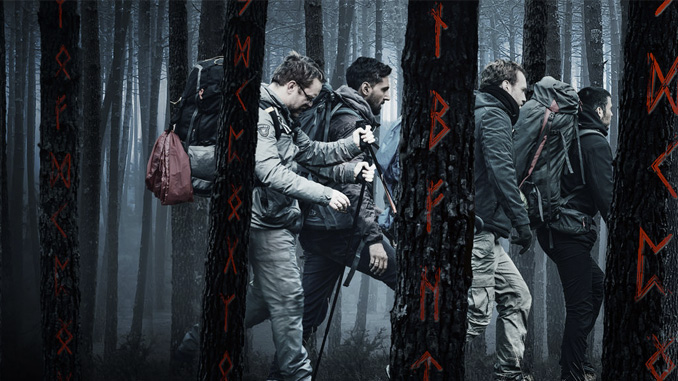
If you were to search for quotes about filmmaking, you’d find that most of them have been spoken by the oft-sung heroes of the art form—directors, actors, perhaps a few writers thrown in for flavor. But one of the most popular among these phrases comes from an often undersung source. Late cinematography great Conrad Hall once said, “Cinematography is infinite in its possibilities… much more so than music or language.”
It’s one of the most succinct encapsulations of a truly vast medium—one of the most integral to the beautiful conglomeration of art that makes a film and one that changes from cinematographer to cinematographer, and from film to film after that.
I recently had the great privilege of talking with one such undersung hero, cinematographer Andrew Shulkind, who worked on The Ritual—a horror film released on Netflix last month. After its release, I penned a piece calling out the three best things about the film, and Shulkind’s masterful cinematography far and away topped my list.
Everything from his dexterity in capturing the challenging scenescape of a forest, to his thematic uses of light, to the tension he was able to build and the terror he was able to inspire despite an often barely glimpsable monster impressed me and immersed me more deeply into the film than I could have been without his work.
Just as inspiring as experiencing Shulkind’s work on-screen is having the opportunity to talk with him about it off-screen, and we covered a lot. Andrew shared unique insights into the making of The Ritual, from his working relationship with director David Bruckner to challenges shooting in the Romanian forest. He also shared a few fun anecdotes from shooting and his inspiring list of favorite cinematographers.
Most recently, you worked on The Ritual with David Bruckner. Having seen and really enjoyed it myself, I found the cinematography to be the key aspect that tied the film together and really made it effective—which is especially impressive, considering that most of the film was shot in various parts of a Romanian forest.
The look and feel of the movie is something that I spent a lot of time thinking and talking about over the course of the movie. One of the great pleasures of working with Dave is that he’s a super visual guy, so we’re able to have really high-level conversations about imagery and tone, and all of those elements were deliberately woven into the sum effect of the film.
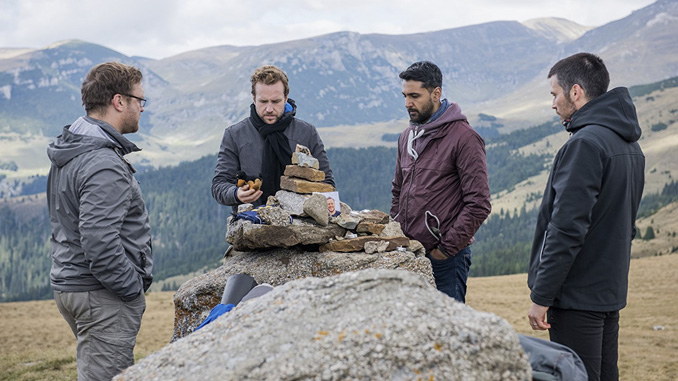
What was your working relationship with David Bruckner like?
Ever since Southbound, David and I have developed a shorthand for making the kind of images that we both love. It’s an honor to work with someone so incisive and discriminating.
He’s more involved in the visual direction than most, and we work actively from the storyboards. But with all directors, it is vital for me to understand their take on the movie before I formulate the visual approach, so that I can marry our two impressions of the movie and make sure that we’re entirely on the same page.
Often, directors are pulled in a million directions at critical moments—for a wardrobe, to review an edit, do a call on another project—and I want to make sure that I understand his or her take on the movie clearly enough that when the director isn’t available for every trifling decision that we need to make, they can trust that i’m earnestly protecting their vision.
How did you prepare for shooting in the forest in pre-production?
With a lot of layers and many rolls of tree marking tape! We explored as much of the Southern Carpathians as our prep schedule would allow. By the time I made it to Romania, David and our producer, Richard Holmes, had narrowed an even wider search to about a 100-acre zone. But during prep, the production office was based in Bucharest, which was three and a half hours south of where were shooting. So we’d get up to the Bucegi forest as often as we could.
After three weeks of hiking trips during prep, we basically became arborists in identifying the different kinds of trees and the winter stages of their foliage so that we could chart a course through these landscapes and audiences (hopefully!) would feel a sense of progression. We had spiny forests that had no leaves, lush forests that had bright green leaves, and dead forests that had a more desaturated bluish tone to their needles.
We were very selective about what scenes would take place where and how we would get to the village clearing in a way that made it feel remote. Shooting five weeks of exteriors in a remote, high-altitude forest was an extreme challenge, but—secretly—that’s why I love it. We wanted the severity of that challenge and the subtlety of those choices to read on screen.
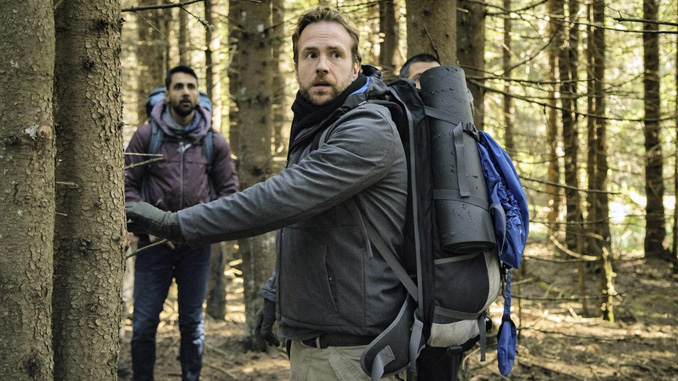
Did you run into any challenges when you were framing shots, just based on a lack of open space?
Yes, one the biggest challenges was framing. Dave and I wanted a floating camera that felt like a more stabilized version of handheld, so we used a combination of handheld, gimbals with a stabilized remote head, and Steadicam. But composing a shot in a forest with no 90˚ angles made finding horizon a real challenge—even when we got to our village set piece.
All of those buildings and outhouses were crafted to feel handmade, with rough-hewn wood and almost no vertical or horizontal references, so horizon gets really subjective. In our modern, organized world, not having any square references is really destabilizing, and I think that it creates a kind of an anxiety for the viewer, which works for the movie.
I’ve read that you worked with a lot of industry titans early on in your career after, graduating from NYU film school. Did any of your past experiences with those DPs or your own work with VR play into or influence how you approached shooting The Ritual?
Absolutely. First of all, I cherish those experiences that I’ve had watching other DPs work and still count many of those guys as good friends. I realize what a rare gift it is to have such close insight into how other experts work at such a high level, and I often draw upon details and aspects that I gleaned from those days.
For example, I learned how to light for dark environments by watching Darius Khondji light Panic Room (2002); I learned how to move the camera meaningfully from Janusz Kaminski [Schindler’s List (1993), Saving Private Ryan (1998)]; how to utilize remote heads from Don Burgess [Forrest Gump (1994), The Conjuring 2 (2016)]; how to collaborate with the visual effect department from Scott Farrar [Transformers (2007)] and Dennis Muren [Jurassic Park (1993), E.T. the Extra-Terrestrial (1982)]; how to work with physical and mechanical effects from Guillermo Navarro [Pan’s Labyrinth (2006), Hellboy (2004)] and Stan Winston [The Terminator (1984), Aliens (1986)].
As for virtual reality, I’ve spent the last four years trying to model how to bring the nuanced tenets of traditional filmmaking into the virtual space, but as you reference, it has worked in the opposite direction as well. Lighting and shooting spaces for interactive engagement has to use the touchstone of traditional filmmaking in order to be good.
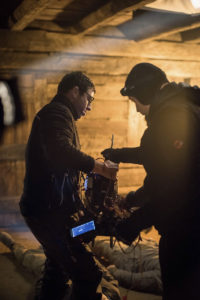
On traditional projects, I find that I’m more inclined to light an entire space—as if we were seeing in 360˚—just so that we can move quickly and actors aren’t bound by a big grip jungle and are free to perform where they like.
Lately, in the VR/AR/XR space, we’re doing a lot of volumetric work and scanning spaces, and the line between cinematography and VFX is very blurred. In the case of The Ritual, we had the benefit of Andy Serkis’ involvement and the resource of his motion capture stage, on which we captured data points and movement similar to what we use to capture live action assets in mixed reality.
Were there any other films or specific cinematographers that you looked to for inspiration?
John Schwartzman [Jurassic World (2015)] once told me, “Your prep should be spent trying to figure out how to create the visual version of your first impressions of the script.” So during prep, once David and I had aligned the visual narrative, I tapped into all of my memories and inspirations and actively sought out examples of night exteriors in the forest, but I couldn’t find any examples that felt real enough.
Oftentimes, horror movies are so dark and inky that there isn’t any detail and certainly no depth, and non-horror movies are so lit and up that it doesn’t even feel like night. I felt like we could do better with the advancements in sensors and lens technology, so we decided to create our own version of realistic scary night.
Still, I am very influenced by classic and contemporary cinematographers and would be nowhere without their art. Invariably, my list includes Conrad Hall [Butch Cassidy and the Sundance Kid (1969)], Chivo [Gravity (2013), Birdman (2014)], [Rodrigo] Prieto [Silence (2016), The Wolf of Wall Street (2013)], Roger Deakins [No Country For Old Men (2007), Sicario (2015)], John Seale [Mad Max: Fury Road (2015)], Darius [Khondji], Don [Burgess], Janusz [Kaminski], and Chris Doyle [In the Mood for Love (2000)].
In monster-centric horror, the monster is generally the main source of terror. But a lot of the terror in The Ritual was communicated through environmental nuance—the shot of human-like fingers uncurling from around the top of a tree trunk and the camouflaged elk-like beast jerking forward in the last second of the frame are two shots that specifically come to mind. Was it challenging to compose shots around such an elusive monster?
Thanks for noticing that. It’s a fine balance between never seeing the monster and feeling like it actually pays off—we wanted to do both. Our own anxieties and paranoia are usually scarier than anything we could create, so we wanted to save the monster and only see it sparingly.
David was keen on the creature having very human and practical characteristics, which made it creepier and familiar. We had a lot of fun with that on set. Josh and Sierra Russell, who built the practical effects, had all sorts of beast parts (arms, the headpiece, etc.) that we shot practically, and I think that that infused the character of the monster with real life, so it doesn’t end up feeling like a total CGI creature.
Much of our creature coverage was shot practically—and a lot of it was embellished with post effects—but the actual performance of a (very patient and nimble stuntwoman) really give such vitality to the creature.
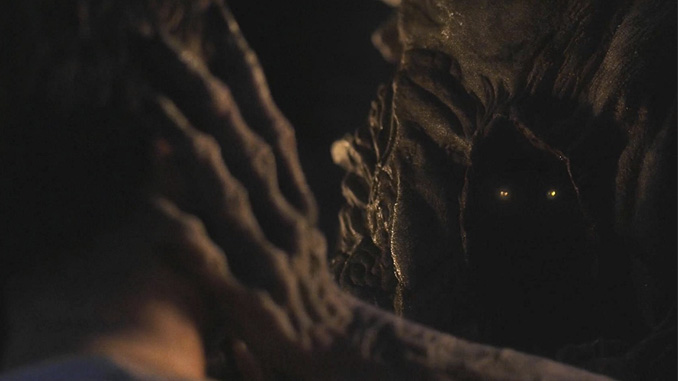
The dreamscapes in The Ritual are some of the most beautiful I’ve ever seen, with the masterful blending of the natural forest with Luke’s liquor store trauma, and they really drew me further into the film rather than disrupting and taking me out of it.
What was your approach to shooting those scenes? Did you make any specific choices or use any specific techniques to visually separate the dreams from the rest of the narrative?
Those moments were in the original script and were part of what really drew me to the project in the first place. We worked really closely with the production designer, Adi Curulea, to make those special and real and weave them into the location naturally.
In order to recreate that motif in so many different places, we thought a lot about what the bare minimum elements were that the audience would remember from such a scarring moment—flickering light, repeating pattern of lights, harshness and brightness of light, detail of bottles, geography of the store. And then we found ways to carry those core elements into different landscapes.
As it happens, we shot the actual liquor store at the end of our schedule, so the trickiest part was creating the iterations before the source event!
One choice was about keeping that low-saturation, greenish fluorescence unique to that incident. That color doesn’t appear anywhere else in the movie, so when we see and feel that color, it becomes the same trigger for the audience as it does for Luke. Also important was the repeating pattern of those lights. We toyed with the idea of adding a visual effect in one instance, where the pattern of lights would continue endlessly into a vanishing point, but it felt too heavy-handed.
We had a lot of fun recreating that scene over and over again in different ways. During Luke’s nightmare in the abandoned house, we actually stitched together two shots, photographed a few weeks apart—one in the house and the other in the re-dressed liquor store, with built out elements of each location in the other to help hide the seam.
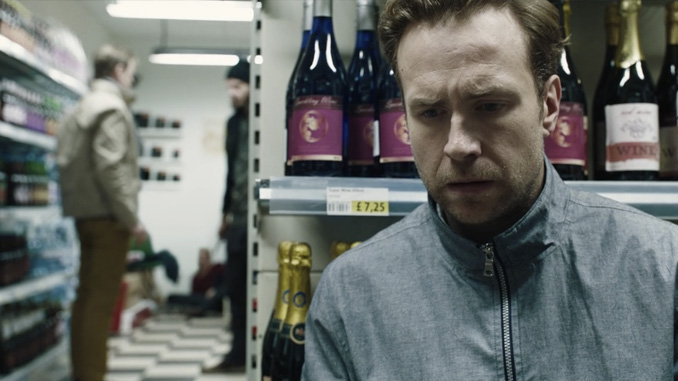
Do you have any other anecdotes or interesting stories to share about shooting The Ritual?
We were shooting in the fall, and there were tons of villagers and Roma gypsies wandering through the forest, collecting these mushrooms to eat and sell—not like truffles or Wood Ear mushrooms, but insane, multi-colored, red with white spots, Snow White-style mushrooms.
The forest was so green and lush, and these neon colors would just pop. I must have photographed 30 completely different varieties. I had never seen colors like that before and became kind of obsessed. We were warned by our locations team that they’re deadly to the touch, but then we heard later that they’re just hallucinogenic.
Another story is from when we were shooting the scene of the mummies in the attic. We were shooting during a supermoon on the upper floor of this house that we had built in our village location. My gaffer was about to light the master mummy with a little light source hidden behind a roof rafter, but I noticed that the moon was so bright and our camera and lens setup was so sensitive that we could actually use the moon to light part of our interior scene.
We were about to burn down this house anyway, so we had the art department cut a hole in just the right spot of the roof to light this character. We had to shoot it quickly—before the shaft of light moved from the Earth’s rotation—but it worked out great, and the shot is in the movie!
What are you working on now? Can you tell us anything about what’s next for you?
I just finished up a couple of commercials for Pepsi—one of which was for the Super Bowl—and also a bunch of immersive, mixed reality projects with some fun partners. I can’t get too specific about it, but I’m very intrigued by how storytelling plays into interactive environments.
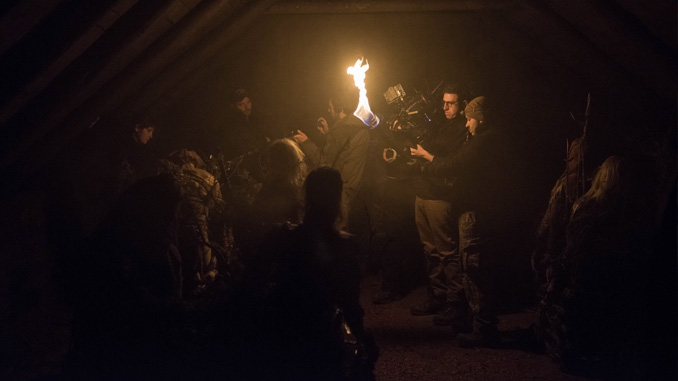

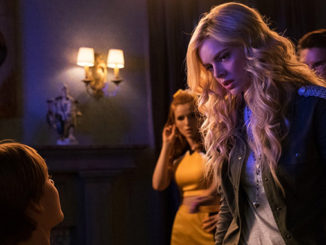
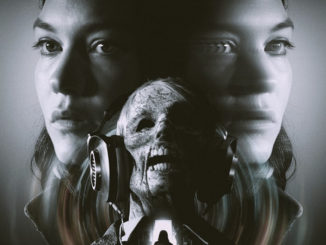

Be the first to comment